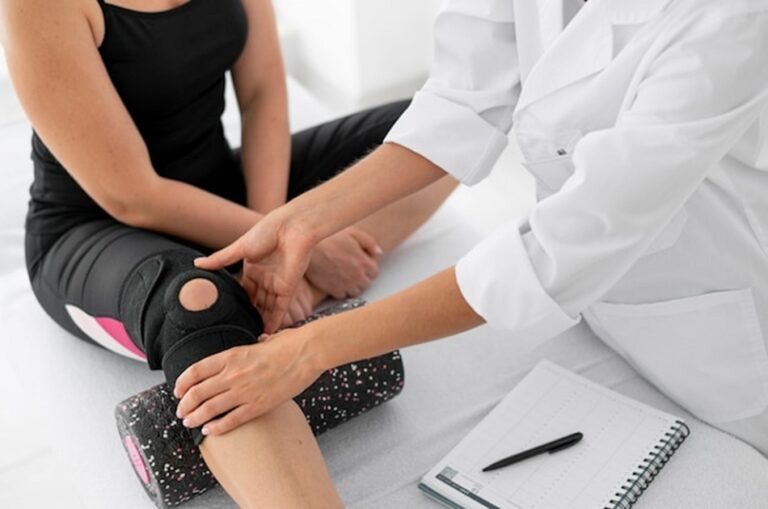
The Role of Lumbar Traction Devices Treating Lumbar Disc Herniation
Lumbar disc herniation is a prevalent medical condition affecting millions of people around the world. It can be a painful and debilitating issue, often limiting one’s mobility and daily activities. However, with innovations in modern medicine, various treatment options are now available to help patients manage this pain. One such treatment gaining popularity among healthcare professionals is lumbar spinal decompression. In this article, we’ll delve into the role of lumbar traction devices in treating lumbar disc herniation and how it may benefit patients.
How Lumbar Spinal Decompression Works?
Lumbar spinal decompression therapy is a non-invasive technique used to alleviate pressure on the spinal nerves and discs. The treatment uses a lumbar traction device to gently separate the vertebrae, allowing the spinal nerves and discs to reposition and heal. The process helps reduce pain and inflammation in the area, improving a patient’s mobility and overall quality of life.
The Benefits of Lumbar Traction Devices
Lumbar traction devices offer significant benefits to patients suffering from lumbar disc herniation, stenosis, or other related conditions. Some of the key advantages of this therapy include:
- Non-invasive treatment:Lumbar spinal decompression therapy does not require surgery or medication, making it a safer alternative for patients who may have concerns about invasive procedures or side effects from medications.
- Pain relief and improved mobility:By reducing pressure on the spinal nerves and discs, patients often experience substantial pain relief and improved mobility, allowing them to resume their daily activities.
- Minimal recovery time:Unlike surgical treatments, which could require weeks or even months of recovery, lumbar spinal decompression therapy has minimal downtime, meaning patients can quickly return to their normal routines.
Appropriate Candidates for Lumbar Spinal Decompression
Patients who may benefit from lumbar spinal decompression therapy typically suffer from conditions such as lumbar disc herniation, stenosis, or other degenerative spinal issues. However, healthcare professionals must conduct a thorough evaluation to determine if a patient is an appropriate candidate for this treatment. Factors that may impact a patient’s eligibility include age, overall health, and the severity of their spinal condition.
Incorporating Lumbar Traction Devices in Your Practice
As lumbar spinal decompression therapy continues to gain popularity in the medical community, healthcare professionals should consider incorporating lumbar traction devices into their practice. Doing so can provide patients with another effective treatment option and help them manage their symptoms better. When considering lumbar traction devices for your practice, there are several factors to keep in mind.
First, you’ll want to make sure you choose a device that is FDA approved and has been tested for safety and effectiveness. You should also look into the device’s design and features, such as adjustable traction levels or optional accessories that may be needed for certain motions or specific treatments. Additionally, it’s important to partner with a reputable supplier who offers good customer service and technical support.
By ensuring that you choose the right device for your patients, you can help them gain better pain relief and improved mobility. Lumbar traction devices are a powerful tool in treating lumbar disc herniation and other spinal conditions, offering both clinicians and patients alike an effective solution to managing their symptoms.
To Sum Up
Lumbar traction devices can be an effective tool in treating lumbar disc herniation and other spinal conditions. These non-invasive devices provide patients with pain relief, improved mobility, and minimal recovery time. Healthcare professionals should familiarize themselves with the features of lumbar traction devices and partner with reputable suppliers to provide their patients with the best treatment option available. With this knowledge, clinicians can ensure that their patients gain relief from their lumbar issues.











